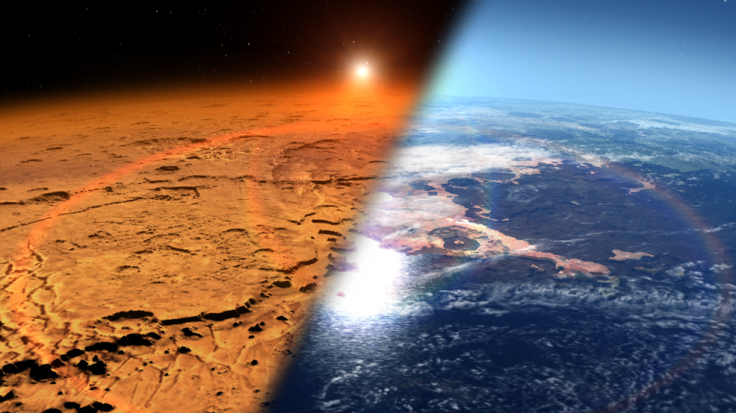Climate Change On Mars: This Is How Much Air It Lost To Space And What That Means

Mars has thin air that is mostly made of carbon dioxide, but its atmosphere wasn’t always so inhospitable. Experts say what’s there now only represents about a third of the atmosphere it used to have.
A study in Science says researchers took chemical measurements at different altitudes on Mars to determine that the Red Planet has lost about 66 percent of its atmosphere to outer space since it was born about 4.5 billion years ago. The significant loss of atmospheric gas would have played a role in Mars going from the warm and wet planet scientists believe it once was to the cold and dry landscape it is today.
Read: 9 Places on Earth that Are Kind of Like Mars
The scientists gathered their data with a NASA spacecraft called Mars Atmosphere and Volatile Evolution, or MAVEN. According to the study, the information help us understand “how and why its climate changed, informing the study of similar processes on Earth,” as well as the “potential habitability of the planet.”
“It’s possible microbial life could have existed at the surface early in Mars’ history,” the University of Colorado at Boulder said in a statement. “As the planet cooled off and dried up, any life could have been driven underground or forced into rare surface oases.”
The thinning of the atmosphere played a significant role in that cooling off and drying up, as gas and radiation from the Sun — which was more intense when the solar system was younger — stripped away the air on Mars and changed its climate.
“This discovery is a significant step toward unraveling the mystery of Mars’ past environments,” MAVEN scientists Elsayed Talaat said in the university statement.
It’s not just how the thin atmosphere affects the environment that makes the air on Mars inhospitable. At least for humans, who need to breathe a certain amount of oxygen, a lower air pressure means the particles are more spaced out, making it harder to get what we need. While the air pressure at sea level on Earth is in the neighborhood of 14.7 pounds per square inch, or psi, on Mars it’s less than one-tenth of one pound of pressure. Even at the top of Mount Everest, where it is already difficult for people to breathe, the air is exponentially thicker than it is on the surface of Mars.
MAVEN launched in late 2013 and has been orbiting Mars ever since. It made news recently when NASA had to perform a quick maneuver so the spacecraft could avoid colliding with Phobos, the larger of Mars’ two uneven moons.
See also:
© Copyright IBTimes 2024. All rights reserved.





















